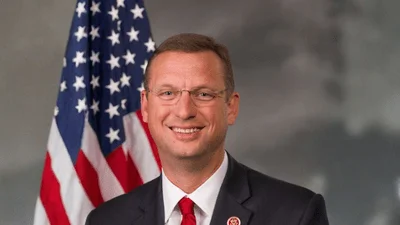Conservation is hardly a new thing for Delsie Hoyt and her husband Chuck Eaton. Since the 1790s, Eaton and his family have stewarded the land in West Fairlee, Vermont. Twenty years ago, a portion of the Eaton property was conserved through a local land trust. More recently, Delsie and her husband have moved to conserve more of the land working with Vermont NRCS, Connecticut Council on Soil and Water, Vermont Fish and Wildlife, and other conservation partners. The Healthy Forest Reserve Program (HFRP) helps landowners restore, enhance, and protect forestland resources on private lands through easements and financial assistance. Through HFRP, landowners like Chuck Eaton and Delsie Hoyt promote the recovery of endangered or threatened species, improve plant and animal biodiversity, and enhance carbon sequestration. One of the main features of HFRP is the restoration of forestlands and assorted lands through 30-year or permanent easements on privately owned eligible lands. These features are what spurred Eaton and Hoyt to pursue the program.
Working towards the HFRP Regional Conservation Partnership Program (RCPP) was a lengthy process. Four years ago, serendipity, as Hoyt put it, struck. While U.S. Fish and Wildlife were studying bats in abandoned copper mines nearby, a target bat species for HFRP was found nesting on the land. This set the HFRP process in motion. “There were a lot of surveys, evaluations, inventories that had to be done to keep the process moving. Vermont NRCS worked closely with Vermont Fish and Wildlife to ensure everything was done as it should be. The local staff were helpful, knowledgeable, and reassuring,” said Hoyt.
Partners played a key role in the conservation efforts of the Eaton family land. Both the Connecticut Council on Soil and Water and the Highstead Foundation were involved with the process. “Success in protecting the Eaton parcels was the result of concerted, sustained efforts on the part of many stakeholders, a true conservation partnership. The CT Council on Soil and Water Conservation, along with the Highstead Foundation, were the administrators of the federal grant that funded the protection of the Eaton Parcels with an environmental easement. The process involved the landowners, the NRCS state office in Vermont and Connecticut, the land trust that provided the financial match to the federal funds, and a team of appraisers, surveyors, and real estate legal experts. It required a good deal of time and dedication, but the program guidelines were easy to follow as all agents communicated clearly and frequently. We are so proud to have helped in bringing this easement to closing, and we applaud the landowners for their initiative and the NRCS for making it possible,” said Lilian Ruiz, Executive Director of the CT Council on Soil and Water Conservation.
With the two easement parcels closed covering nearly 420 acres, Delsie looks to continue the family’s conservation legacy. “We chose the HFRP because of the length of the easement, the long-term oversight on habitat management, and the ability to keep their conservation legacy into the future,” Hoyt stated. Not satisfied with simply conserving their land, Hoyt and her husband also want to be a voice for conservation. “We want to expose others to these different programs and learn how they work. The land is still ours, and we are choosing to conserve it responsibly,” said Hoyt. Delsie and her husband hosted an event to highlight the importance of conservation and help promote efforts to protect Vermont’s forests.
For more information on conservation easements, please contact your local USDA Service center.
Original source can be found here.







